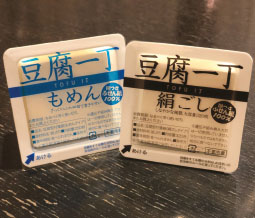Home > Highlighting JAPAN > Highlighting Japan October 2018 > From Japan to the world
Highlighting JAPAN


The Many Charms of Japanese Stationery Goods
Japanese stationery goods are known for their high quality and creative designs. Lately their fun, playful designs and sheer variety have been captivating consumers internationally.
Thanks to a winning combination of practicality, variety and exuberant creativity, the popularity of Japanese stationery goods is growing worldwide, with many visitors from outside Japan buying stationery items as souvenirs and more people abroad purchasing articles for personal use.
One place that reveals all of this clearly is Bunbougu Café in Tokyo’s Omotesando area, a “stationery café” where you can enjoy a cup of coffee and eat while trying out different types of stationery goods before purchase. The café’s owner, Toru Okuizumi, confirms that the reason local writing supplies have gained attention is their functionality, creativity and designs.
Plenty of Japanese stationery items have become major sellers worldwide due to functionality alone. In recent years, for example, Pilot Corporation’s FriXion, a pen with an eraser on its end, has gained a large fanbase. FriXion was first sold in Europe in 2006, and in Japan from the following year. Since then, over two billion of these pens have been purchased worldwide.
“In Europe, students use ballpoint pens or fountain pens rather than pencils,” Okuizumi explains. “Every time they made a mistake, they would have to use white-out. FriXion was therefore very convenient for European students. The functional properties and convenience led to its popularity.”
Another trait of Japanese stationery is wildly creative design. Non-Japanese who visit the stationery café or take part in stationery-related events regularly talk about how cute and colorful they are. Bunbougu’s staff receives plenty of comments about how excited people are about using the innovative stationery.
“If you look at non-Japanese stationery items, you’ll notice there is a limit on color variations and that there isn’t much product variety,” Okuizumi says. “For instance, in Japan there’s a colorful magnet inspired by a toy windmill that moves with the wind. There’s also a notepad that looks like a block of tofu, and is sold in tofu packaging. You can’t really find such innovative examples of stationery in other countries. There are many cases in which people are surprised when they find out the products are actually stationery items, and buy them for their novelty.”
After witnessing these reactions, Okuizumi realized that Japanese stationery goods are seen a little differently from overseas.
The stationery market in Japan will soon face difficulties due to the reduced use of paper in offices and the switch to online and computerized communication, as well as the increased use of electronic tablets in schools and the decrease in population. Japanese stationery makers are therefore refocusing on overseas markets.
“Overseas sales are growing, but there isn’t a huge lineup of Japanese stationery goods in shops as of yet,” Okuizumi says, “so there’s still a chance for growth and expansion. For that to happen, though, Japanese stationery companies will need to continue promoting the usability, quality and unique designs—as well as the entertainment factor when using these products—to differentiate them from more common writing tools.”
The status and desirability of Japanese stationery items are sure to continue rising as customers overseas discover their singular charms.
© 2009 Cabinet Office, Government of Japan









